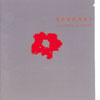¬
news
¬ about
¬
artists
¬
records
¬
contact
¬
order
¬
links |
 |
 |

|
 |
Scanner
Warhol’s
Surfaces
CD |
"If you want
to know all about Andy Warhol, just look at the surface:
of my paintings and films and me, and there I am. There's nothing behind
it."
Andy Warhol
Andy Warhol and
the Interviews
Talking
Talking talking talking, that's always been with him. From the word go,
pop involved an element of gossip, and everybody knows you can't do that
without talking.
Art as conversation, as dialogue - that's how most of Andy Warhol's works
came about, always the outcome of a conversation. "The aim is to
get people to talk, because sooner or later someone says something that
gives me a new idea." Warhol was a meticulous collector of everything
around him; discussions, conversations, even small talk, were the non
plus ultra. As early as 1964 he bought his first tape recorder to collect
conversations and he called it "my wife". But initially the
recordings he made served no particular purpose. Later they became the
books "Andy Warhol's Index (Book)" (1967), "a. A novel"
(1968), a draft novel made up of unbroken conversations in the Factory
collective, and "THE Philosophy of Andy Warhol" (1975) as well
as "The Andy Warhol Diaries" (1989) edited by Pat Hackett. His
stage play "Pork" (1971), which enjoyed off-off-Broadway success
at the La Mama Theater, contained written-down phone conversations Warhol
conducted with the Chelsea girl Brigid Berlin.
Recording
"Tape recorders opened up fantastic possibilities for interviews
with a wide variety of celebrities." Given such an appreciation of
conversation, it was clear that Andy Warhol would professionalize his
love of dialogue. In 1969 he founded the magazine "inter/View",
whose title changed after only a few months, first to "Interview"
and then to the more commercially effective "Andy Warhol's Interview".
Each issue contained interviews with VIPs, sometimes conducted by Andy
Warhol himself, which of course he brought to the editorial offices in
the form of tape recordings.
Soon Warhol himself was a hotly sought-after interviewee in all the media.
The German writer Helmut Heißenbüttel found in 1971 that the
interviews Warhol gave were "half absurd, half banal dialogues ",
indicating that "Warhol is famous, Warhol is an idol, Warhol is an
artist, Warhol is eccentric./.../Is he the great destroyer? Does he corrupt
the young? Is he immoral? Will you find it easier to imagine what he's
like if you listen to the music he has inspired? If you listen to the
interviews he disseminated?"
Playback
Yes, you will. The composition by the London sound artist Scanner takes
interview material with Andy Warhol from the early 70s as the starting
point for a soundtrack which attempts to make something extraordinary
from something very ordinary. Warhol answered a series of simple questions.
Scanner has dug around in the material and brings out unusual acoustic
moments, expressed in Warhol's choice of words, his breathing, his way
of pausing. Warhol's voice is edited, broken down into layers, structures.
The words dissolve. In the transformation of sounds, in loops, there emerges,
despite all the bustle, all the eloquence and the omnipresence, the idea
of boredom surrounding the pop artist.
Barbara Schäfer,
May 2003
(translated by Alan Miles)
Written & produced
by Robin Rimbaud
Scannerdot Publishing, administered by Bug Music
edited by Herbert
Kapfer
Bayerischer Rundfunk / Hörspiel und Medienkunst
D-80300 Munich, Germany
Produced by BR Hörspiel
und Medienkunst
Producer: Barbara Schäfer
Design: Daniel Kluge
intermedium
rec. 017
ISBN 978-3-939444-18-3
CD out of stock
|
